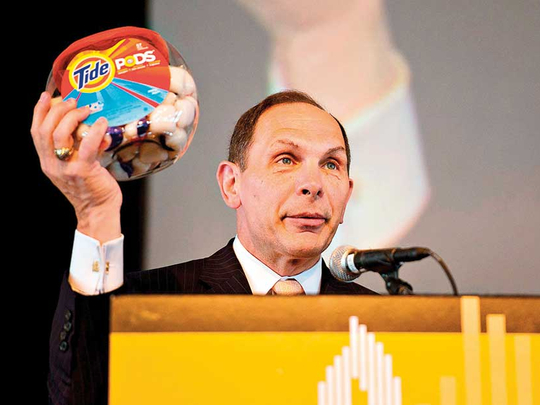
New York: It seems every few weeks another challenge takes social media by storm.
Some, like the Ice Bucket Challenge, promote a cause. Others, like the bottle-flipping craze, are benign. But then there are those fads that are ill-informed or, worse, dangerous.
The latest, the “Tide pod challenge,” belongs in that category. It involves biting down on a brightly coloured laundry detergent packet and spitting out or ingesting its contents, an act that poses serious health risks.
YouTube and Facebook said they will remove material showing people who have recorded themselves performing the challenge. Tide released a video in which Rob Gronkowski of the New England Patriots discouraged the practice.
Here’s a look at how an improbable idea promoted on the internet has become a cause for genuine concern.
Is this really a problem?
Fads like the Tide challenge lend themselves to exaggeration, so it’s wise to be wary of alarmist warnings not backed up by evidence. In this case, however, data suggests a shift in recent weeks, particularly among teenagers.
In the first half of January, poison control centers handled 39 cases in which teenagers were intentionally exposed to the detergent packets. That was as many as in all of 2016, the American Association of Poison Control Centers said. Last year, poison control centers handled 53 such cases, the group said in a news release.
The problem is more serious for young children. Last year, centers received 10,570 reports of children 5 or younger being exposed to the packets, the group said. Details on the severity of the injuries were unavailable.
Why are they so dangerous?
The companies that make the packets use different formulas, but one thing is clear: They contain more than just soap, said Dr. Diane Calello, the medical director of the New Jersey Poison Information and Education System at the Rutgers New Jersey Medical School.
Highly concentrated detergent and a variety of chemicals are inside, depending on the brand, she said. A dissolvable covering holds it all together.
“What we’ve seen is when children or adults bite into these things that moisture-sensitive membranes basically just disintegrates and the contents explode inside your mouth,” she said in a phone interview.
That’s when the pain sets in. The chemicals cause severe burns to the mouth, oesophagus or respiratory tract, she said, adding that some very young and very old patients with cognitive issues have been rushed to emergency rooms or even died as a result of eating the packets.
“This is not something I would put anywhere near someone’s mouth,” she said.
How did this even start?
The origins and inspiration of the challenge are murky, but jokes have circulated online about the temptation of a product that is known to be dangerous but that bears a resemblance to brightly coloured candy.
In late 2015, the satirical publication The Onion published commentary from a child’s perspective in which he vowed to consume one.
“From the very second I saw those blue and red detergent pods come out of that shopping bag last week, I knew immediately that, come hell or high water, I would eat one of those things,” he wrote.
Last March, the comedy website CollegeHumor posted a video sketch in which a man agonised over his desire to eat the pods, which he compared to Gushers, the fruit snacks with a liquid centre and chewy outer covering.
In recent weeks, similar jokes have surfaced online featuring real or doctored images of the pods made to look like food, such as pizza toppings.
Even a senator, Chuck Schumer of New York, once said he was tempted to eat a pod because of its bright colours. “I don’t know why they make them look so delicious,” he said at a 2012 news conference about their medical risks, according to The Daily News.
What should you do if someone ingests a laundry pod?
If you or someone is exposed to detergent, it’s important to reach a medical expert right away, either by contacting a poison control centre or a doctor.












